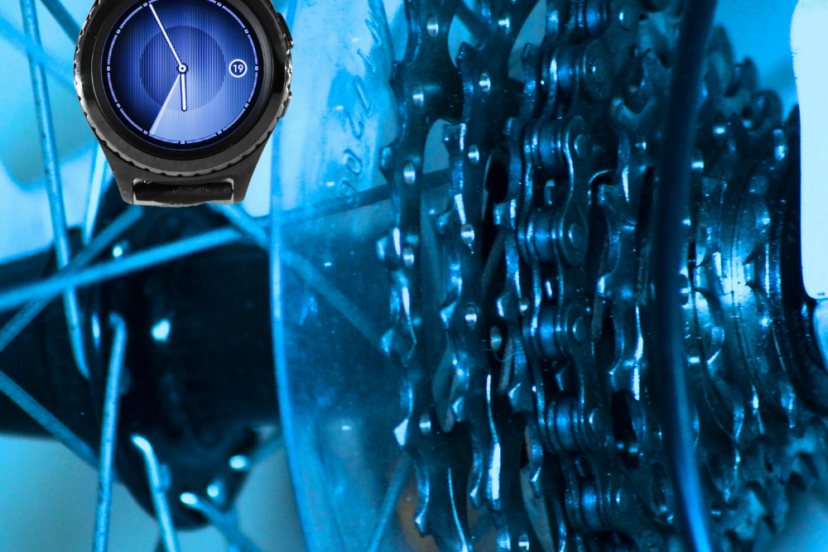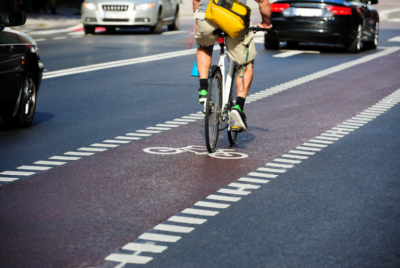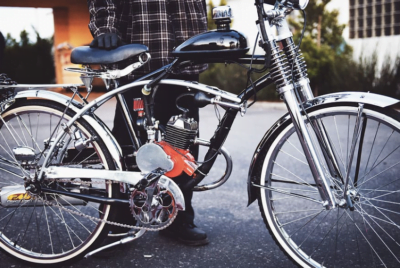Unlocking the Benefits of Bicycle Cadence Sensors for Your Galaxy Watch
Cycling has exploded in popularity in recent years, with more and more people discovering the numerous benefits of this enjoyable and eco-friendly mode of transportation. In tandem with this trend, smartwatches have become indispensable companions for fitness enthusiasts and athletes alike. As a result, the need for bicycle cadence sensors that are compatible with these cutting-edge devices has become increasingly apparent, particularly for those who don Galaxy Watches on their wrists.
Understanding Bicycle Cadence Sensors
What is a bicycle cadence sensor?
A bicycle cadence sensor is a small electronic device that measures the cyclist’s pedaling speed, expressed in revolutions per minute (RPM). By providing real-time data on the frequency of pedal strokes, cadence sensors enable riders to optimize their performance, improve cycling efficiency, and achieve their fitness goals more effectively.
Types of cadence sensors: wireless and wired
Cadence sensors are available in two main varieties: wireless and wired. Wireless sensors, which are more prevalent in today’s market, transmit data via Bluetooth or ANT+ technology, while wired sensors require a physical connection between the sensor and the display unit. Both types offer their unique benefits, but wireless sensors are generally favored for their simplicity, ease of installation, and compatibility with a wider range of devices, including the Galaxy Watch.
The Importance of Cadence in Cycling
Cadence: the key to efficient cycling
Cadence is a critical factor in achieving optimal cycling efficiency, as it directly impacts the rider’s power output, energy expenditure, and overall comfort. By maintaining an appropriate cadence, cyclists can minimize muscle fatigue, reduce the risk of injury, and enhance their endurance for longer, more gratifying rides.
How cadence affects your performance and fitness goals
A well-regulated cadence enables cyclists to strike the perfect balance between power and endurance. A higher cadence (90-100 RPM) is ideal for climbing and endurance rides, as it reduces muscle strain and conserves energy. Conversely, a lower cadence (60-80 RPM) promotes greater power output, making it more suitable for sprinting and time trials. By monitoring and adjusting their cadence accordingly, riders can tailor their efforts to meet specific performance objectives and maximize the efficacy of their workouts.
Galaxy Watch: A Perfect Companion for Cyclists
Features and benefits of using a Galaxy Watch for cycling
The Galaxy Watch is a versatile and powerful smartwatch that offers a plethora of features designed to enhance the cycling experience. With built-in GPS, heart rate monitoring, and a robust suite of fitness tracking capabilities, the Galaxy Watch enables cyclists to monitor their progress, analyze their performance, and customize their workouts with ease. Furthermore, the watch’s compatibility with a wide range of cycling apps and sensors, including cadence sensors, makes it an indispensable tool for serious cyclists and casual riders alike.
Compatibility with bicycle cadence sensors
The Galaxy Watch is designed to seamlessly integrate with various bicycle cadence sensors, enabling users to receive real-time feedback on their pedaling frequency directly on their wrists. With ANT+ and Bluetooth connectivity options, the watch can pair with a multitude of sensors currently available on the market, ensuring a streamlined and efficient cycling experience.
How to Choose the Right Cadence Sensor for Your Galaxy Watch
Factors to consider: compatibility, connectivity, and battery life
When selecting a cadence sensor to pair with your Galaxy Watch, it’s essential to consider several factors. Compatibility is of utmost importance, as not all sensors will work seamlessly with every smartwatch. Additionally, the connectivity options (Bluetooth or ANT+) should align with your watch’s capabilities. Lastly, battery life is a crucial consideration, as longer-lasting sensors require less frequent charging or battery replacement, reducing potential disruptions to your cycling routine.
Top cadence sensor options to pair with your Galaxy Watch
The market offers numerous high-quality cadence sensors that are compatible with the Galaxy Watch. Some of the top contenders include the Wahoo RPM Cadence Sensor, Garmin Bike Cadence Sensor 2, and the Polar Cadence Sensor Bluetooth Smart. Each of these options boasts excellent connectivity, reliable performance, and impressive battery life, ensuring that you can enjoy a seamless and informative cycling experience.
Setting Up Your Bicycle Cadence Sensor with Galaxy Watch
Step-by-step installation guide
To install a bicycle cadence sensor with your Galaxy Watch, follow these straightforward steps:
- Attach the cadence sensor to your bike’s crank arm or chainstay, according to the manufacturer’s instructions.
- Ensure that your Galaxy Watch is charged and powered on.
- Navigate to the watch’s settings menu, and enable Bluetooth or ANT+ connectivity, depending on the sensor’s specifications.
- Activate pairing mode on the cadence sensor, as directed in the product manual.
- On your Galaxy Watch, open the cycling app of your choice, and search for available sensors.
- Select the appropriate cadence sensor from the list of detected devices, and confirm the connection.
Syncing your cadence sensor with the Galaxy Watch
Once the cadence sensor is successfully installed and connected to your Galaxy Watch, it should automatically sync data during your rides. However, it’s essential to periodically check for firmware updates and ensure that both your watch and the sensor are running on the latest software versions to guarantee optimal performance and compatibility.
Navigating the Galaxy Watch Cycling Features
Customizing your cycling workout settings
The Galaxy Watch offers a wealth of customizable settings to help you tailor your cycling workouts to your specific goals and preferences. Within the watch’s cycling app, users can adjust various metrics, such as target heart rate zones, speed thresholds, and distance goals. Additionally, cyclists can configure the display to show pertinent information, such as current cadence, elapsed time, and calories burned, ensuring that they have all the data they need at their fingertips.
Monitoring your cadence during a ride
With a bicycle cadence sensor paired to your Galaxy Watch, monitoring your pedaling frequency during a ride is a breeze. The watch’s display will show your real-time RPM, allowing you to make adjustments as needed to maintain your optimal cadence range. This feedback is invaluable for enhancing your cycling efficiency and achieving your performance objectives.
Analyzing Cadence Data for Performance Improvement
Identifying your optimal cadence range
To determine your optimal cadence range, consider factors such as your fitness level, riding style, and personal preferences. In general, a cadence of 80-90 RPM is recommended for most riders, but this may vary based on individual factors. By analyzing your cadence data over time, you can identify patterns and trends that can inform your training strategy and lead to performance improvements.
Tips for maintaining and improving your cadence
Consistent practice and targeted exercises are crucial for maintaining and improving your cadence. Incorporate drills, such as high-cadence spinning or single-leg pedaling, into your regular training regimen to develop your pedaling efficiency and increase your comfort at various cadence levels. Additionally, use your Galaxy Watch and cadence sensor to track your progress and make data-driven adjustments to your workouts.
Additional Cycling Metrics to Track with Your Galaxy Watch
Heart rate monitoring and training zones
In addition to cadence, your Galaxy Watch can track your heart rate during rides, providing valuable insights into your cardiovascular fitness and training intensity. By monitoring your heart rate, you can ensure that you’re working within appropriate training zones for your specific goals, maximizing the effectiveness of your workouts.
Speed, distance, and elevation tracking
The Galaxy Watch also offers comprehensive tracking capabilities for speed, distance, and elevation, allowing you to monitor your progress and analyze your performance across various terrains and conditions. This data can be invaluable for identifying areas for improvement and fine-tuning your training plan.
Beyond Cycling: Other Fitness Features of the Galaxy Watch
Multisport tracking and workout detection
While the Galaxy Watch excels as a cycling companion, its fitness tracking capabilities extend far beyond the saddle. With multisport tracking and automatic workout detection, the watch can record and analyze data for various activities, such as running, swimming, and strength training, making it a versatile and comprehensive fitness tool.
Sleep and stress monitoring
In addition to its workout tracking features, the Galaxy Watch also provides valuable insights into your sleep patterns and stress levels, helping you optimize your recovery and overall well-being. By monitoring these metrics, you can make informed decisions about your training, nutrition, and self-care practices to maximize your performance and achieve a balanced, healthy lifestyle.
Conclusion
In conclusion, pairing a bicycle cadence sensor with your Galaxy Watch can unlock a wealth of benefits, transforming your cycling experience and empowering you to achieve your performance and fitness goals. With real-time cadence data at your fingertips, you can optimize your efficiency, reduce the risk of injury, and make data-driven decisions about your training. The Galaxy Watch’s comprehensive suite of fitness tracking features, combined with the added insights from a cadence sensor, makes it an indispensable tool for passionate cyclists and casual riders alike.
FAQ
What is a bicycle cadence sensor?
A bicycle cadence sensor is an electronic device that measures a cyclist’s pedaling speed, expressed in revolutions per minute (RPM). It provides real-time data on pedaling frequency, enabling riders to optimize their performance, improve cycling efficiency, and achieve their fitness goals more effectively.
Why is cadence important in cycling?
Cadence is essential in cycling as it directly impacts the rider’s power output, energy expenditure, and overall comfort. By maintaining an appropriate cadence, cyclists can minimize muscle fatigue, reduce the risk of injury, and enhance their endurance for longer, more gratifying rides.
How do I choose the right cadence sensor for my Galaxy Watch?
When selecting a cadence sensor for your Galaxy Watch, consider factors such as compatibility with your watch, connectivity options (Bluetooth or ANT+), and battery life. Top cadence sensor options compatible with the Galaxy Watch include the Wahoo RPM Cadence Sensor, Garmin Bike Cadence Sensor 2, and the Polar Cadence Sensor Bluetooth Smart.
Can the Galaxy Watch track other cycling metrics besides cadence?
Yes, the Galaxy Watch offers a robust suite of fitness tracking capabilities, including heart rate monitoring, speed, distance, and elevation tracking. These features can provide valuable insights into your cycling performance and help you achieve your specific goals.
Are there any other fitness features available on the Galaxy Watch?
In addition to its cycling-specific features, the Galaxy Watch also supports multisport tracking and automatic workout detection for various activities, such as running, swimming, and strength training. Moreover, the watch offers sleep and stress monitoring features, helping users optimize their recovery and overall well-being.



